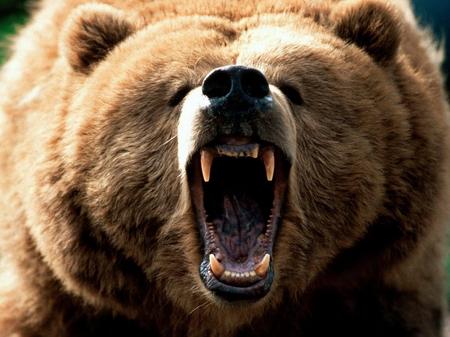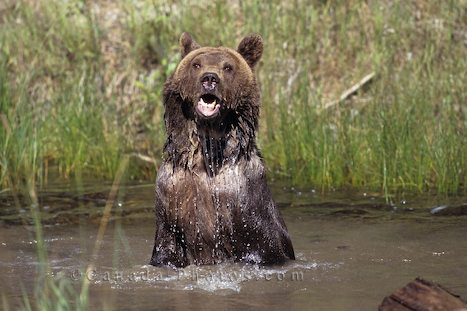The capture and translocation of bears can be effective in damage control. Unfortunately, relocation often only moves the problem to another site, and bears have been known to travel great distances to return to a trapping site. The handling process, if done correctly, is itself sufficiently traumatic to teach the bears to avoid humans. Use culvert traps or foot snares to capture bears. Continue reading Trapping Grizzly Bear
Category: Bears
Identifying Grizzly Bear Sign and Damage
Brown (grizzly)Â bears have many unique behaviors that subject them to situations in which they are perceived as a threat to humans or personal property. They are opportunistic feeders that may switch to scavenging human-produced food and garbage if made available, becoming a problem around parks, camp grounds, cottages, suburban areas, and garbage dumps. Bears that are conditioned to human foods become used to the presence of humans and are therefore the most dangerous. Continue reading Identifying Grizzly Bear Sign and Damage
About the Grizzly Bear
Although wildlife management concepts have been around, bears and their management have been poorly understood to date. Recent concern for the environment, species preservation, and ecosystem management are only now starting to affect the way we manage grizzly bears (Ursus arctos). By the way, Grizzly bears are the same as brown bears.
The difficulty in understanding brown bear biology, behavior, and ecology may have precluded sufficient change to prevent the ultimate loss of the species south of Canada. Grizzly bears must be managed at the ecosystem level. The size of their ranges and their need for safe corridors between habitat units bring them into increasing conflict with people, and there seems to be little guarantee that people will sufficiently limit their activities and land-use patterns to reduce brown bear damage rates and the consequent need for damage control. Drastic changes may be needed in land-use management, zoning, wilderness designation, timber harvest, mining, real estate development, and range management to preserve the species and still meet damage control needs.
Costs of Grizzly Bear Damage and Control
The US Endangered Species Act of 1973 dictates that the grizzly bear be favored and protected. In terms of a natural resource, individual grizzlies are considered worth $500,000 by some accounts, and the $20,000 penalty for a wrongful death underscores the importance of management. In terms of tourism, recreation, film making, photography, hunting, and all the other cultural and art values of the grizzly, each bear is certainly worth the half million dollars cited above. Yet in Montana, where the future of the grizzly is in jeopardy, their value was only recently raised from $50 to $500.

Various parts of bear have illegally sold for as much as $250 per front claw, $200 per paw, $10,000 for the hide, $500 for the skull, and $30,000 for the gall bladder. Poachers would likely be fined only $10,000 if caught. One hope for brown bears may be found in the private sector people who value bears highly and contribute to organizations that support proper bear management. Damage prevention and control costs could also be met by such organizations. Because hunting is no longer widely practiced, revenues for bear management have declined. Wildlife agencies must develop a higher value for the brown bear and divert fees collected from hunting other species to meet the rising costs of bear management.
Legal Status of Grizzly Bear

Grizzly bears south of Canada are protected as a threatened species under the US Endangered Species Act of 1973. However, the states Wyoming and Montana have limited grizzly bear hunting seasons as authorized under the act, but the seasons are currently closed pending clarification of the act through legal challenges in court and further actions by the states. Without state hunting seasons, killing of grizzlies is allowed only through official control actions or defense of self and property.
North of the Canadian border, grizzlies are hunted to varying extents in Alaska, Alberta, British Columbia, the Yukon, and the Northwest Territories. Wrongful killing of a grizzly bear mandates a severe penalty of up to $20,000 in fines. Taking grizzly bears is being more liberally defined as court challenges establish that even habitat destruction can be interpreted as taking or killing.